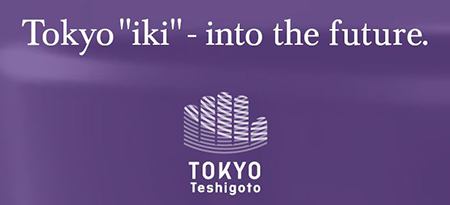Edo Hake
(Edo Brushes)

- A tool for creating traditional crafts has become a traditional craft in itself.
- The Edo Hake (Edo brush) is an essential tool for traditional Japanese crafts, being used in the form of Urushibake (Japanese lacquer brush) for Urushi application work for Shikki (lacquerware), Kyojibake (brush used by a Hyogushi, or picture framer), wood engraving brush, dyeing brush, and doll brush, and it is trusted by many craftsmen. Seven kinds of brushes, including Oshiroibake (powder puff) used for Japanese makeup, and painting brushes used for coating share the common name of Edo Hake and are manufactured according to techniques established in a long time. Materials used include human hair, animal hair, plant fibers and others, according to the specific application. For example, horse hair is used to facilitate even coating of brushes for Kyojibake. In every case, the tip determines the integrity of a brush product and it is considered that the best tip is one that is flexible and enables even coating. To achieve this, the craftsman devotes a great deal of time and effort to the various processes, which include Hinoshi (ironing) to stretch and straighten the hairs and Kemomi (hair rubbing) using rice husk ash to remove fat. Craftsmen see their mission as making modifications to suit users’ particular needs and will accept orders for products with more or less hair content. The finished products are comfortable and easy to manipulate, and their durability ensures that they will stand up to regular use over extended periods.
| Main Areas of Manufacture | Taito Ward, Sumida Ward, Shinjuku Ward |
|---|---|
| Designation/ Certification Date | February 4th, 1982 (Tokyo Certification) |
| Traditionally Used Raw Materials | As brush materials, human hair, animal hair, as well as plant fibers such as Tsugu and hemp palm are all used. Cypress wood, bamboo and similar materials are used to make brush handles. |
Traditional Technologies and Techniques
- For lacquer brushes (Urushi Hake), the hair comprising the brush head is stiffened using a starch paste. The brush head is then mounted and affixed to the brush block.
- The following techniques are employed when manufacturing paper hanger brushes (Kyoji Hake), dye brushes (Senshoku Hake), doll brushes (Ningyo Hake), woodblock printing brushes (Mokuhan Hake), paint brushes (Toso Hake) and the cosmetic brushes (Oshiroi Hake) used to apply white face powder:
① For brushes whose brush head is comprised of hair from different sources, the different hair types are mixed equally using a steel comb.
② Rice husk ash is used, and animal hair is ironed and softened in order to eliminate grease from the hair.
③ Suretori is the process of spreading out and sorting the hair; broken and irregular strands are removed using a small knife.
④ Binding involves hair being placed in a device called a Shimegi (comprised of wooden boards), or the use of something similar. Silk thread or wire is used for binding bundles of hair.
History and Characteristics
As painting tools, brushes have been made in Japan since long ago. Within literary sources, the oldest reference made to the use of brushes comes from the Heian Period (approx. 794 - 1185). It discusses using millet feathers as rudimentary brushes to apply lacquer. The use of hemp palm hair in a similar role is also cited.
In a book called "Bankin-sugiwai-bukuro" (which might be described as a "guide to contemporary products") that was published during the mid-Edo Period in the 17th year of the Kyoho Era (1732), there is a map featuring a number of brush varieties then in use. Among these, the "Edo Hake" is listed.
In modern times, there are seven brush types designated as "Edo Hake" (Edo Brushes). These are paper hanger brushes (Kyoji Hake), dye brushes (Senshoku Hake), doll brushes (Ningyo Hake), woodblock printing brushes (Mokuhan Hake), paint brushes (Toso Hake) and cosmetic brushes (Oshiroi Hake).
The tip of a brush represents its most important feature. Because materials that "don't allow for uneven coating in brush strokes" and those "with stiffness" are the best, in addition to deciding on which materials to use when manufacturing brushes, the rigorous attention to duty of the brush craftsman is also important.
Modern brushes use human hair and animal hair such as horse, deer and goat, etc. They also use plant fibers such as hemp palm. With respect to hair strands that are curly or contain grease, such factors can impact craftsmen and their ability to carry out detailed work when brush making. Thus, an important part of the manufacturing process is dedicated to both organizing the tips of the hair, and correcting curliness and eliminating grease from among the hair strands.
Accordingly, the majority of time spent making brushes is expended on such activities.
Furthermore, when the Golden Hall of Chuson-ji Temple (built in 1124) in Hiraizumi Town, Iwate Prefecture was dismantled for repair in 1955, a very ancient and rare lacquer brush measuring 20.5 cm long with a thickness of 1.05 cm was discovered.
Contact Details
| Manufacturing Area Cooperative Name | Tokyo Brush Association |
|---|---|
| Address | 2-16 Nihonbashi Odenmacho, Chuo-ku, Tokyo 103-0011 |
| TEL | 03-3664-5671 |






